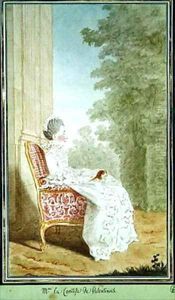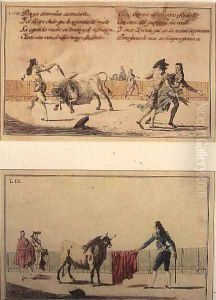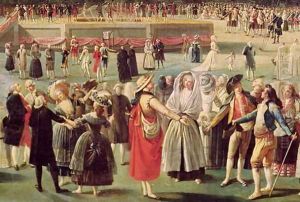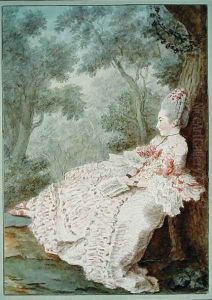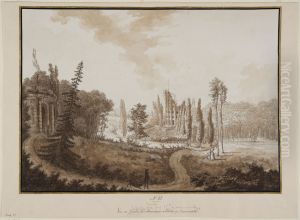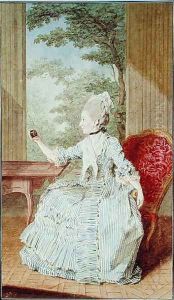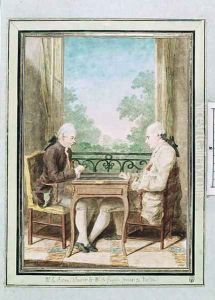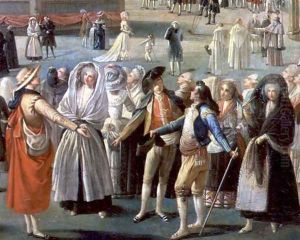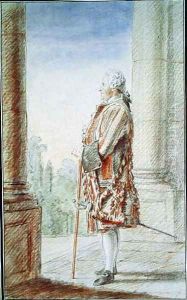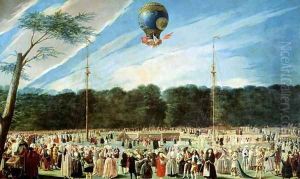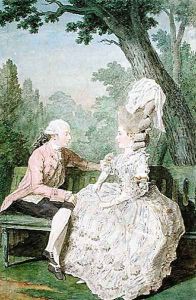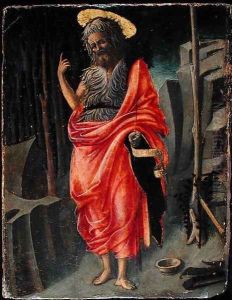Louis Carrogis Carmontelle Paintings
Louis Carrogis Carmontelle was a French dramatist, painter, architect, and designer known for his diverse talents and contributions to the arts in the 18th century. Born on August 15, 1717, in Paris, France, Carmontelle came from a modest background and initially pursued a career in engineering. He was employed as a draftsman and later became a tutor to the children of the French aristocracy, which allowed him to make connections with influential figures of his time.
Carmontelle's artistic career began to flourish when he started working for the Duke of Orleans, Philippe d'Orléans, as a designer and organizer of court entertainments. He is perhaps best known for his invention of the 'transparencies,' which were intricate and detailed gouache paintings on thin, translucent paper that were lit from behind and viewed in a darkened room, similar to a modern-day slide show. These works were highly popular during the Enlightenment period and exemplified his innovative approach to art and entertainment.
In addition to his transparencies, Carmontelle also produced a vast number of portraits and landscape watercolors, capturing the likenesses and social environments of the French elite. His works were characterized by their light-hearted and sometimes satirical nature, which provided a fascinating glimpse into the social and cultural life of the time.
Carmontelle was also known for his theatrical works, having written over 100 plays, proverbs, and monologues, many of which were performed at private gatherings of the aristocracy. His contributions to theater and court entertainments played a significant role in shaping the social fabric of the French elite prior to the French Revolution.
Later in life, Carmontelle was involved in landscape architecture and designed the Parc Monceau in Paris, which is still known today for its picturesque gardens and eclectic layout. The park reflected his artistic vision, with a combination of classical and exotic elements that appealed to the romantic sensibilities of the era.
Louis Carrogis Carmontelle passed away on December 26, 1806, leaving behind a legacy of artistic innovation and a vivid portrayal of 18th-century French society. His work continues to be studied and appreciated for its historical significance and artistic merit.
